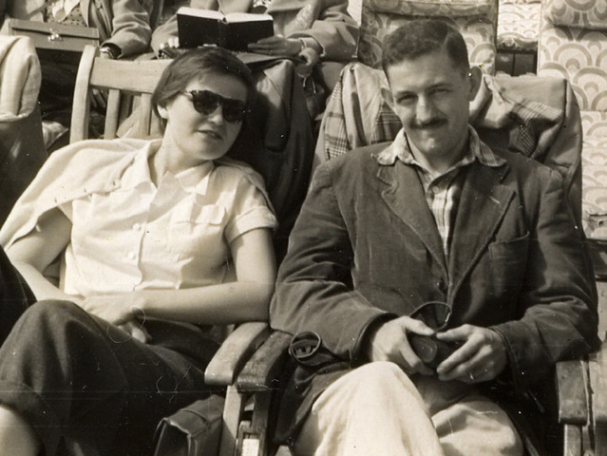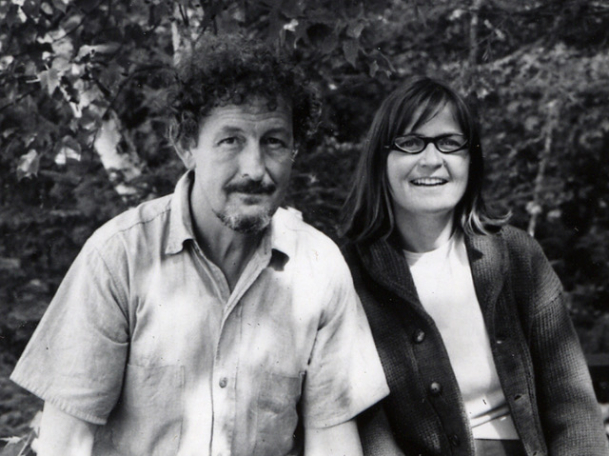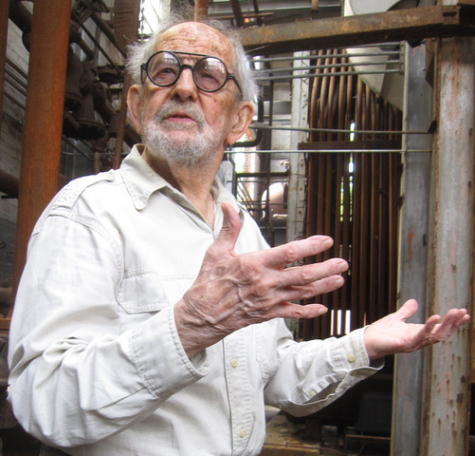Dear UIC,
Career
Roland is considered one of the pioneering abstractionists of Chicago; his art also serves as an early example of an abstract style not traditionally associated with Chicago's art history.
Roland's unique brand of abstract painting, using patterns of shapes, lines, and colors dispersed about the picture plane, has merited the exhibition of his work at The Metropolitan Museum of Art, MoMA and the Whitney Biennial in New York as well as showings throughout Europe and Japan. Roland has referred to his paintings with phrases like “lyrical formalism” and “soft geometry” suggesting a poetic use of abstract forms and a connection to Surrealism, respectively. Despite the strong figurative presence in Chicago art, Roland has maintained an unwavering devotion to abstract painting. His long-term dedication to abstraction makes him one of the most singular and individualistic figures in the spectrum of postwar Chicago art.
Roland was involved in creating important arts organizations and exhibitions in Chicago. While attending the School of the Art Institute of Chicago, Roland was among the students from SAIC and the Institute of Design (including Leon Golub, Irving Petlin, Robert Nickle, and Ellen Lanyon) who organized Exhibition Momentum in response to the exclusion of students by AIC from their Chicago & Vicinity shows. In 1953 Roland founded (with Lanyon and others) the non-profit Graphic Art Workshop, a center for printmaking practice and exhibition. The workshop was damaged by fire in 1955 and closed in 1956. Roland was active in Phalanx (1964-1967) as well as PAC (Participating Artists of Chicago} from 1966 to 1969.
During the three decades after Roland 's return to Chicago from Europe in 1951, he was included in important shows of Chicago artists, including many of the Exhibition Momentum shows. He was featured in the " First Chicago Invitational" of 1962, sponsored by the Frumkin and Holland galleries; the Phalanx 3 exhibition of 1965; "Exhibition 150" at Barat College in Lake Forest in 1968 (celebrating the sesquicentennial of the State of Illinois); and " Abstract Art in Chicago" at MCA in 1976. Gallery 400 at UIC honored Roland's forty years as an artist and an instructor at the university with a retrospective in 1986.
Roland was part of the group (including Richard Hunt, Miyoko Ito and Seymour Rosofsky) that showed at the short-lived Superior Street Gallery from 1958 to 1961 and was later represented by the B.C. Holland Gallery, Dart Gallery and the Roy Boyd Gallery.
Selected public collections include The National Gallery of Art, Brooklyn Museum, Smithsonian American Art Museum, Art Institute of Chicago, Illinois State Museum, Museum of Contemporary Art Chicago.
Roland is survived by his children, Andrew and Lisa and his grandson, Walker.
-Andrew Ginzel
References:
Lynne Warren, Editor; Dominic Molon, Author; Art in Chicago 1945-1995; Thames and Hudson; Museum of Contemporary Art, Chicago 1996
Maggie Taft (Editor), Robert Cozzolino (Editor); Art in Chicago: A History from the Fire to Now; University of Chicago Press 2018





